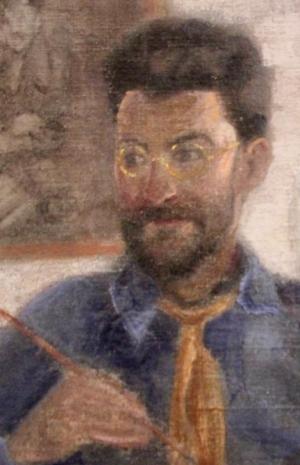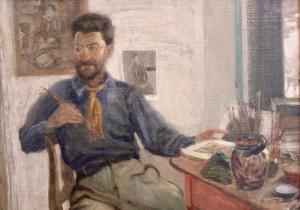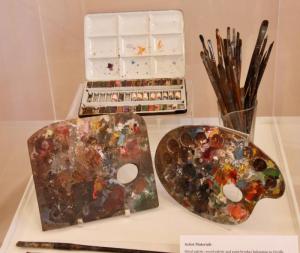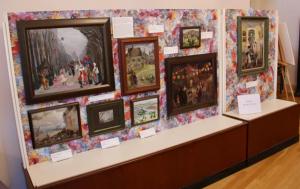Peets exhibit adds new dimension to Zwaanendael Museum
Russian philosopher and novelist Leo Tolstoy did a lot of thinking, much of it about art. With great regard for his fellow humans, he felt that art succeeds as art to the extent to which it enhances the sense of brotherhood and sisterhood among people.
If, in the process of viewing a painting, listening to a piece of music or reading a poem or a novel, people feel themselves closer to other humans and less separated, then that work of art - to Tolstoy’s way of thinking - achieves a degree of success.
There are more salons and exhibits now than there have been in recent decades. People gather in homes or galleries to listen to live music, or discuss books, or view and discuss paintings. And we’re fortunate to live in an area where throughout the year there is lots of live music performed in concerts and bars and outdoor venues. Tolstoy would approve.
These happenings bring people together in places where they focus their collective attention on artistic achievement. Sometimes that achievement is created in isolation, sometimes in live performance.
Artists work silently in front of their canvases, engrossed in the color of their paints, the feeling of the liquid hues transferred from palette to brush to canvas taking their minds from one dimension to another. Time suspends as a piece of art emerges, stroke by stroke; or, from the composer’s mind, note by note on a staff on paper.
Miraculous. Even the dot of red paint placed on a sheet of paper by a child who then reaches for a blotch of blue or yellow to add to the scene - even that takes that young, developing mind to a different part of the brain that has less to do with individual survival and maintaining a separative existence from others.
“Here, look what I did. Do you like it?”
And another joins in, and for a moment a joint sense of appreciation, two minds focused on one subject.
In a world so focused on divisiveness, artists and poets play an important role in pulling us back toward the sanity of knowing that at the root of it all, humans are ultimately connected by a collective consciousness. It’s that infinite ocean where our individual souls are like droplets all forming the one. Our souls pull from that ocean when we are born, return there when we die. In between, we live. Art offers a constant reminder of where we came from and where we’re going.
Alleluia, love, free at last!
All of this arises from an exhibit of paintings currently on display on the second floor of the Zwaanendael Museum in Lewes. The group of 14 paintings by Ethel Canby Peets and her husband, Orville Houghton Peets, represents a pleasant departure from museum exhibits usually displayed by Delaware’s Division of Historical and Cultural Affairs.
Delaware owns an extensive collection of original art including thousands of pieces. Between 2004 and 2007 the division acquired over 400 pieces of multi-media works created by the artistic Peets couple.
After decades of studying art and painting in Delaware, Pennsylvania and France, Ethel and Orville settled down on an historic estate named Thorneby, on Herring Creek near Millsboro. They painted at Thorneby and became involved in the artistic and cultural life of Sussex County.
Their mastery of painting, new approaches and perspectives, and varied interests sparked excitement and influenced others looking to expand their minds. They shared the artistic interests with members of the Village Improvement Association in Rehoboth Beach and were founding members, along with Louise Corkran and Ethel P.B. Leach, of the Rehoboth Art League in 1938. Orville was also an active member of the Sussex County Archaeological Society.
The paintings on display at the Zwaanendael - an exhibit free and open to the public at least through next fall - offer a taste of the interests and artistic mastery of Ethel and Orville. There are street scenes in Paris, nighttime landscapes, portraits of the two - all in the loose and colorful impressionistic style that influenced them during their years in Paris.
Information provided with the exhibit adds to its interest. They brought “fresh modern ideas to Delaware after illustrious careers outside the state in the early 20th century. They each influenced the art scene in a profound and lasting manner by creating art, teaching classes and holding art forums.”
Though small, the Peets exhibit does that wonderful thing of focusing our consciousness and bringing us together through our aesthetic sensitivity. The Division of Historical and Cultural Affairs stretched to add a welcome dimension to what can be offered at the unique Zwaanendael. We should all encourage and look forward to more ventures of this sort in the future.






























































